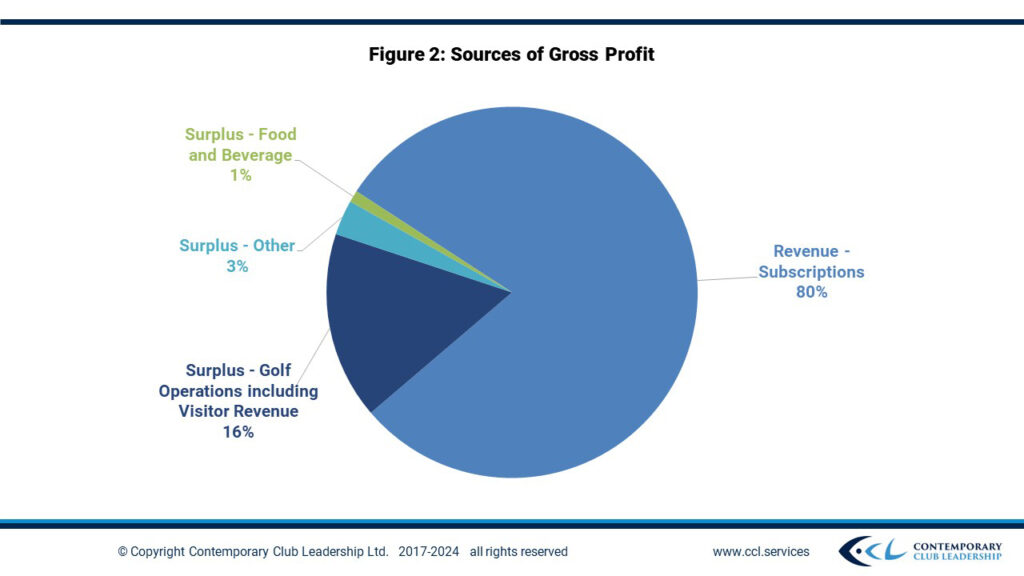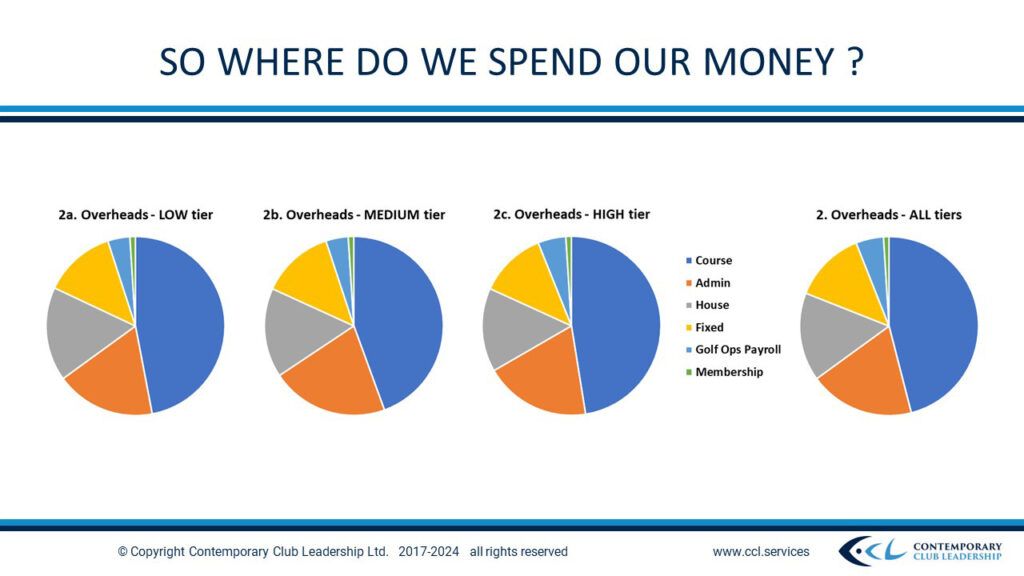In the latest article in our series The Price of Club Golf, leading industry consultant Kevin Fish reveals how a club typically receives money and what they do with it
This article is part of GCMA Insights – topical content for golf industry professionals, discussing the things that matter to those who work in golf clubs.
How does your club generate money? If you’re about to embark on a long list of items you should probably stop right there.
While they might get their cash from a variety of different places, nearly all a club’s gross profit comes from two places – members’ and visitors’ wallets.
Renowned golf industry consultant Kevin Fish can reveal that between 95 and 98 per cent is derived from member subscriptions and visitor green fees.
“Membership subscriptions and visitor green fees account for that high proportion of gross profit, and the only thing that changes is the balance between the two,” he said.
“Some clubs have become a little dependent on the drug that is visitor revenue, while others choose to stand on their own two feet to cover their costs.”

And he added that while food and beverage brings in cash, it rarely generates any profit – his findings coming from having studied the accounts of more than 250 UK golf clubs.
Fish, who has trained over 3,000 club managers through his consultancy firm Contemporary Club Leadership (https://ccl.services), revealed the data on expenditure was also remarkably uniform.
Get involved in the debate.
To join the GCMA, click here, or to organise a call with a call with a member of the GCMA team, just complete the form below.
When it comes to spending money, it doesn’t matter how big the club are, where they might be situated, or how high up the rankings they may be, their costs are also all remarkably similar.
Almost 50 pence in every pound is spent on the golf course, and the vast majority of that is on course salaries. “It’s pretty labour intensive out there!” he said.
Other departments like admin and house are fairly evenly matched, and a slightly lower proportion is spent on fixed costs like insurance, legal costs and affiliation fees.

Then there is golf ops payroll – which is generally, but not always, the pro – and a very small sliver is allocated to membership costs.
Fish said: “That’s things like, ‘what do we spend on the juniors? Team matches?’ It’s generally about one per cent of the total. “You might look at those costs and say, ‘I’ll bet it’s not the same at every golf club’. That’s what everybody says when they first come to me for assurance.

“But it doesn’t matter which club it is, it doesn’t matter what county it is in. Size doesn’t matter. Quality doesn’t matter. Geography doesn’t matter.
“Clubs like to be compared to others of equivalent size, so I have three tiers, low, middle, and high, broken down by what a club thinks their course is worth to a visitor midweek.
WHY JOIN THE GCMA?
Membership of the GCMA unlocks a network of like-minded professionals, provides you with support in your professional and personal development, and provides you with a multitude of benefits. Whether that’s the tools that will help you to excel in your profession, or a wide range of services to support your wellbeing, signing up to the GCMA is joining a community.
“The low tier charges less than £2 a hole, so up to £36 per round, the middle tier is up to £72 and high tier is above that. The figures and proportions (of expenditure) are almost identical.”
He added: “Of course there are always going to be outliers. But a club then needs to ask itself why they perform differently. If that was a conscious decision to perform differently to the other clubs, well done.
“But I sometimes find that a club didn’t realise it was an outlier, and that can put an end to years of mismanagement, years of people pulling the wool over your eyes, and the club can set itself meaningful objective measurements to work towards.
“The governance structure in golf clubs can make decision-making vulnerable to the loudest voice, so I now only ever go into a boardroom as the most informed person, and I strongly advise club managers and club chairpersons to do the same. Isn’t that what any other business would do?”
This article is part of GCMA Insights – topical content for golf industry professionals, discussing the things that matter to those who work in golf clubs.
Get involved in the debate. To join the GCMA, click here, or to organise a call with a member of the GCMA team, just complete this form and we’ll be in touch!
Enquiries
"*" indicates required fields



